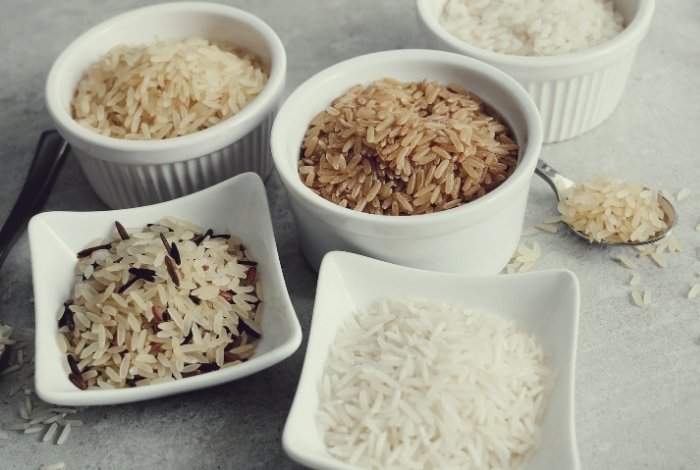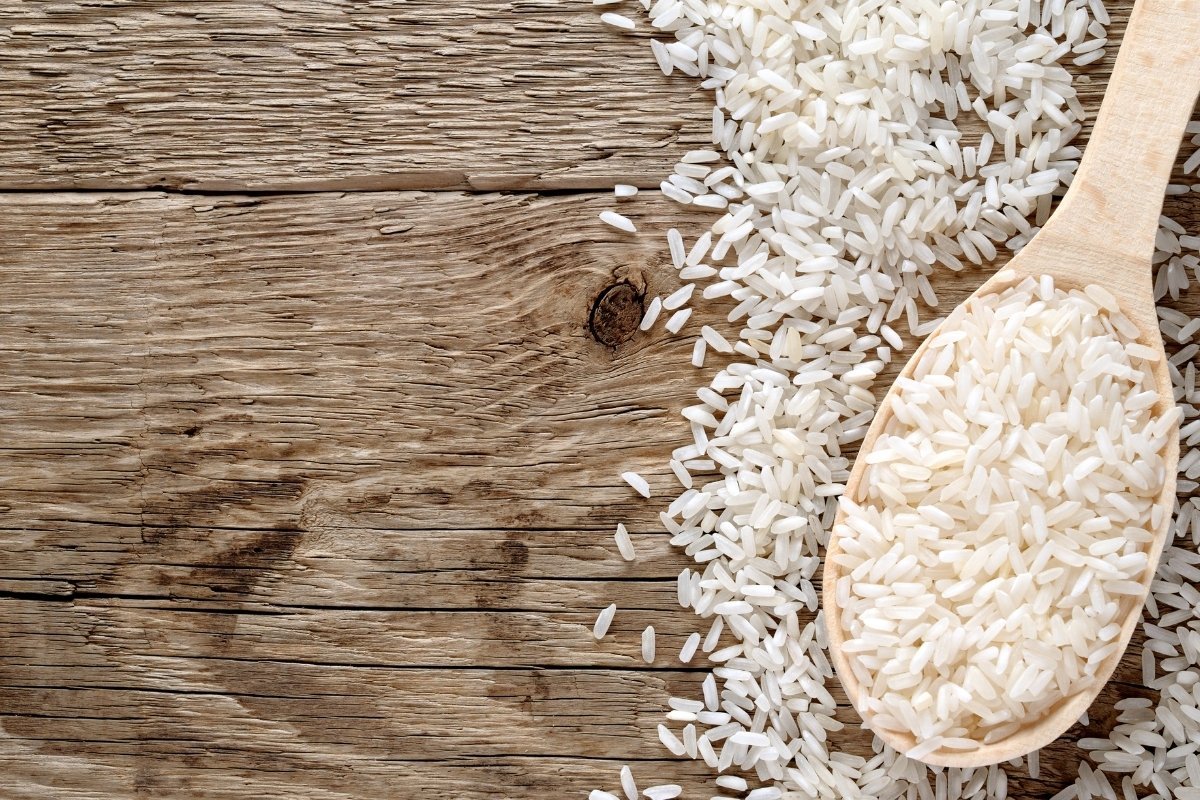Last Updated on October 16, 2024
For most people looking to try white rice for the first time, they seem to wonder if it’s all that natural and safe to eat. And if this is you, it is entirely okay to be conscious about what constitutes your diet. So without any further delays, let’s answer the question is white rice bleached? And shed light on the benefits of some of the best ways to enjoy it. Let’s dive in.
Table of Contents
Is White Rice Bleached?
First of all, you should know that there are different types of rice available. But the common ones include the brown, basmati, and white variety. But you will find more than 10,000 other brands in the market.
The only difference between the white rice and the brown variety is that the bran and husk have been milled off by a mechanical process with the former. This is as opposed to the common belief that the procedure involves using polish or bleach on brown rice. So when it comes to the question of if white rice is safe for consumption, it is absolutely safe to eat.
The activated level of processing would affect the texture and flavor compared with brown rice, but this helps preserve it. By helping to prevent storage, the white variety has a higher shelf life compared to the others.
However, one thing that worries dieticians about white rice is the loss of nutrients and biological germ that gets lost in the refining process. These could help increase the dietary fibers and vitamins that could be of use to the body. When it comes to which has the most nutritional benefit, you can guess which would top the chart. But there are ways to get the best out of white rice.
Can You Eat White Rice?
If you aim to restrict your daily consumption of fiber, then you will find it to be a good fit in your diet. Rich in added folate, pregnant women, could find it a better alternative to help with fetal development. But if you consume it regularly, there is nothing to worry about. This is as long as you balance it with other nutrients.
What Are The Risks?
You should be aware that rice has a high level of arsenic contamination. And this is due to the poor soil conditions in any part of the world. A high intake of the compound can increase cancer risks, diabetes, and heart disease. It has also been linked to a reduction in brain function.

But you should know that the brown variety has more levels of arsenic compared to the white. This is because a high level of arsenic is concentrated in the husk and bran, which is shelled away in the processing. Still, there is a little left when it does reach the market. For the best options with the lowest levels of arsenic, you want to go for basmati, Jasmine, and other varieties grown in the Himalayas.
Another issue to worry about is the fact that it could increase your risks of metabolic syndrome. The high glycemic index is one trigger for type 2 diabetes which makes it not a good fit for people with the condition.
Try out this Cream Of Rice Cereal Recipe: How To Make It In Your Kitchen?
How to Stay Safe with White Rice
You want to consume less of it. The high arsenic level is one thing to be careful with. Large portions frequently would not have the same effect as daily consumption. So keeping your intake to the barest is what you want to work on.
When you enjoy a plate of rice, you want to top it with fruit and veggies to balance the fiber and vitamin loss. This would help the body in getting rid of toxins left behind from our diet. Also, you want to wash down your meal with water and not just juice. And as a matter of importance, keep up with your required daily water consumption. The last time I checked, that was about three liters for men and two for women. So if you are not meeting this mark, you want to keep up.
Aroma Housewares 2-8-Cups (Cooked) Digital Cool-Touch Rice Grain Cooker
Is White Rice Flour Bleached?
White rice flour is not typically bleached. In fact, the vast majority of rice flour is made from unbleached rice, in other words, it preserves its original color, flavor, and all those nutrients that our body craves to be healthy.
In the manufacturing process, the rice is first washed and hulled to remove the grain’s outer covering. After that, it is ground into a fine powder and filtered to eliminate any coarse or undesirable particles. The final result of this method is fine, powdery flour that is pale in color but not bleached.
What needs to be emphasized is that some rice flours may be branded as “enriched” or “fortified,” indicating that they have been supplemented with vitamins and minerals to boost their nutritional content. Although these flours are significantly more processed than unenriched rice flours, they are still not bleached.
Is Arborio Rice Bleached?
As a rule, Arborio rice is not bleached, although there are exceptions as it all depends on the producer. Still, most avoid this practice. In fact, most rice is not subjected to the bleached process since this technique is neither common nor necessary.
In terms of manufacturing, arborio rice is washed and hulled to remove the outer layers of the grain. After that, the rice is milled to remove the bran and germ, which can affect the flavor and texture of the rice. This method often yields white, starchy rice that has not been bleached and is a healthy, natural choice known for its creamy texture and its versatility in the kitchen.
Are Rice Papers Bleached?
Rice paper is a thin sheet made of rice flour, water, and salt. Vietnamese and Chinese cuisines are often used to make spring rolls and other popular dishes. Rice paper is made by combining the components to produce dough, which is then stretched out into thin sheets and dried in the sun or a low-temperature oven.
However, have they been treated with some substances, or in other words, bleached? Fortunately for all concerned consumers, the answer is negative! As you might know, bleaching is a chemical procedure that whitens or lightens the color of a product by using chemicals such as chlorine or hydrogen peroxide. Rice sheets are naturally white due to the rice flour used in their production; therefore, no extra chemicals are used to whiten their hue.
However, given that certain kinds of rice sheets are presented in a dazzling white tone, some customers may be concerned about whether they are bleached. This is because some companies use a different type of rice flour that is naturally lighter in color, resulting in a brighter white hue when the rice sheets are produced. This is not the same as bleaching because no chemicals are used.
Furthermore, to prevent stickiness, some rice sheets may be coated with a thin coating of cornstarch or other harmless and safe-to-consume substances. This can give the rice sheets a little glossy sheen and make them appear brighter, but no chemicals are used.
Therefore, there is no need to worry because the vast majority of them are made from natural ingredients and don’t contain any chemicals that could harm your health. If you don’t want to risk it, we recommend looking for those brands that use natural light rice flour to produce light white rice sheets.
Does Bleach Dissolve Rice?
As many of you already know, bleach is a powerful chemical solution frequently used to clean and disinfect surfaces. It is composed of water, sodium hypochlorite, and other mostly harmful compounds. Bleach has strong disinfection capabilities and is frequently used to eliminate germs and bacteria on surfaces and in water.
Since it can whiten the surface and dissolve many things, we can’t help but wonder if it can dissolve rice. However, the answer is no! It cannot dissolve rice! In a nutshell, rice is a grain composed of complex polysaccharides and other chemical substances, and chemicals like bleach have a difficult time breaking down these molecules.
In fact, rice is often used as a natural absorbent for spills and other messes because it doesn’t dissolve so easily in liquids. Also, don’t forget that it is always recommended to put the phone, for example, in rice if it has come into contact with water.
What is important to state is that if bleach comes into touch with rice, it might affect it. Given that bleach is a strong oxidizing agent, it can combine with other chemicals to induce chemical reactions. When bleach comes into contact with rice, it can discolor it and cause it to lose its natural flavor and aroma. This can make rice taste unpleasant and impair its nutritional value.
Final Note
When it comes to which rice is the best option, in my opinion, they all check out fine. But one thing you should know is white rice is not bleached. The color difference is a milling process that removes the husks and bran and not a chemical process involving dye. The long shelf life is one reason why it sells in high volumes in the rice market.

Barbara is an environmental activist and sustainability advocate who loves living green and sustainable. She firmly believes in reducing her carbon footprint and has been making great strides towards achieving this goal. Barbara is a vegan and avid recycler and has been actively involved in community gardens and other green initiatives. She is passionate about spreading awareness about the importance of living in a sustainable and eco-friendly manner. Barbara is always looking for ways to make a difference in her community and beyond. She is a huge advocate for preserving nature and the planet for future generations.


